Microblading Duration on Mature Skin: Frequently Asked Questions and Answers
Microblading is a semi-permanent cosmetic procedure that has gained popularity in recent years for its ability to give the illusion of fuller, more defined eyebrows. However, there are many questions surrounding the procedure, especially when it comes to mature skin.
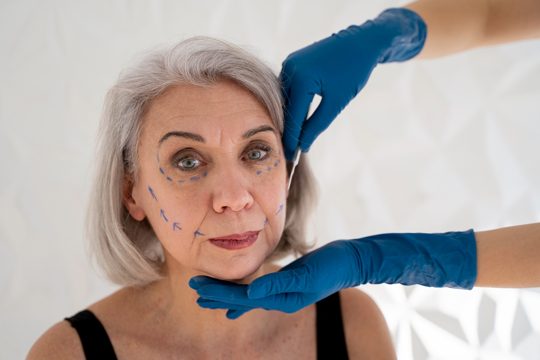
Lets explore some commonly asked questions about microblading on mature skin.
What is Microblading?
Microblading is a type of eyebrow architecture. Its all about creating the best shape for each face – a totally bespoke approach for each client.
The process is very precise thanks to the tool that is used which is effectively like a pen with the nib being a sloped blade with 10-12 little needles at the end - needles that don’t penetrate the skin but just delicately scratch the surface, much like a paper cut. Microblading, akin to an art form, is a specialized method of eyebrow enhancement designed to create the most flattering shape for each individual's face. The beauty of this technique lies in its personalized approach. Just as an artist considers the uniqueness of a canvas, a skilled microblading expert assesses each client's facial structure to develop an eyebrow shape that enhances their natural beauty and complements their features. The accuracy of microblading is attributed to the innovative tool used in the process. Imagine a pen, but instead of ink, it uses a sloped blade with 10-12 tiny needles along its edge.
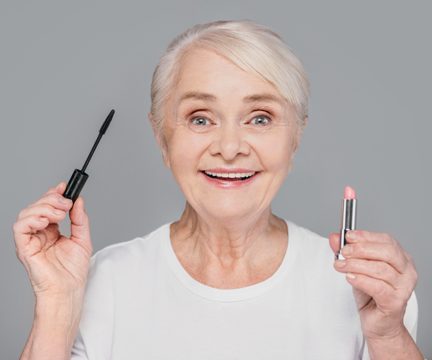
This tool is meticulously crafted to deliver optimal results while ensuring the comfort and safety of the client. Despite being called needles, these fine points don't penetrate the skin as traditional needles would.
Instead, they gently etch the surface, comparable to the sensation of a paper cut, to deposit pigment into the skin. This revolutionary method of eyebrow architecture uses a blend of artistry and precision to enhance your natural beauty. The pen-like tool, with its multi-needle edge, is designed to create the most realistic looking eyebrows, elevating your look while maintaining a natural appearance. Whether you've always desired fuller brows or wish to correct asymmetry, microblading offers a bespoke solution tailored to your specific needs and preferences.
How long does it take?
The initial procedure can take approximately 2 hours. During this time, a pre-drawing will be done, this is where the technician will shape and style your brows for your approval.
Once you are satisfied with your brow shape, the procedure will begin. The primary steps of the procedure are indeed a bit time-consuming, taking approximately two hours to complete, but they guarantee a thoroughly satisfying result. During this period, the technician performs a pre-drawing, a meticulous process crucial to the overall outcome. This pre-drawing stage is where the magic begins to unfold as the technician carefully shapes and styles your brows, tailored to your specific facial structure. Each stroke of the pencil, each adjustment made, is done with your features in mind, aiming to enhance your natural beauty. This is where your input is invaluable and welcomed, as we believe in the importance of client satisfaction and achieving the look you've envisioned.

We understand that your brows are the frame of your face and we aim to perfect this frame to suit your individual style and preferences. Once you are completely satisfied with your brow shape, an outline that will serve as the blueprint for your new brows, we transition to the main part of the procedure.
This is where the real transformation begins. Your approval of the pre-drawing is the green light we need to start the actual procedure, turning the blueprint into a reality, enhancing your look with precision and care. This thorough process ensures that you will not only leave with perfectly styled brows, but also with a heightened sense of self-confidence. We believe that beauty is in the details and we take great pride in our meticulous approach to each step of the procedure. From the moment you step into our salon, to the moment you leave, we are committed to making your experience as comfortable and satisfying as possible.
How long does it take to heal?
The healing process typically takes about 2 weeks. However, the healing speed can vary depending on the individuals age, skin type, circulation, hormonal cycles, and how rigorously the aftercare instructions are followed.
While the healing process typically takes about 2 weeks, it's important to note that this timeframe isn't set in stone. The speed at which our bodies heal can be influenced by a multitude of factors, varying greatly from person to person. For instance, one's age can significantly impact the healing speed, as younger individuals often heal faster due to their robust metabolism and rapid cell regeneration. Moreover, skin type is another crucial factor to consider. People with sensitive or dry skin might need more time for their wounds to heal compared to those with oily skin. Circulation also plays a pivotal role, with better blood flow often resulting in quicker healing.
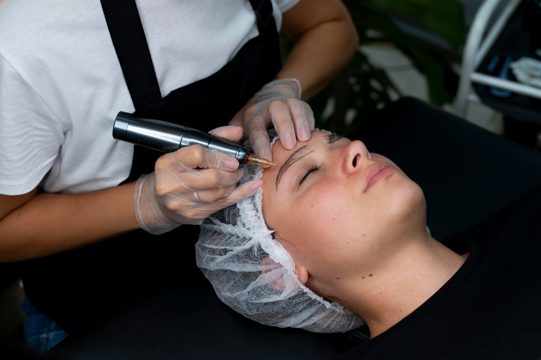
It's because oxygen and nutrients necessary for repair are delivered more efficiently, expediting the healing process. Hormonal cycles, particularly in women, can also affect the healing speed.
Certain stages of the menstrual cycle can slow down or speed up the healing due to fluctuations in hormone levels. Lastly, how rigorously the aftercare instructions are followed can significantly impact the healing timeline. Diligently cleaning the wound, applying the necessary ointments, and protecting it from further harm can all contribute to a faster healing process. In conclusion, while the average healing time may be around 2 weeks, it's crucial to understand that this can vary greatly. One's age, skin type, circulation, hormonal cycles, and adherence to aftercare instructions all play significant roles in determining how quickly their body can heal from a wound.
Is the touch up session necessary?
Yes, the touch-up session is necessary as it is an opportunity to refine the brows and add any additional strokes that may be needed. This is usually done 4-6 weeks after the initial procedure.
Absolutely! It's crucial to understand the importance of the touch-up session, as it plays a key role in achieving the perfect brows. The touch-up session is not just a simple follow-up; it's a golden opportunity to refine and enhance your brows to perfection. During this session, your brow artist can fill in any gaps with additional strokes, or subtly adjust the shape or color to better suit your features and skin tone. This level of customization ensures that your brows will compliment your unique beauty. The touch-up session is typically scheduled 4-6 weeks after the initial procedure.
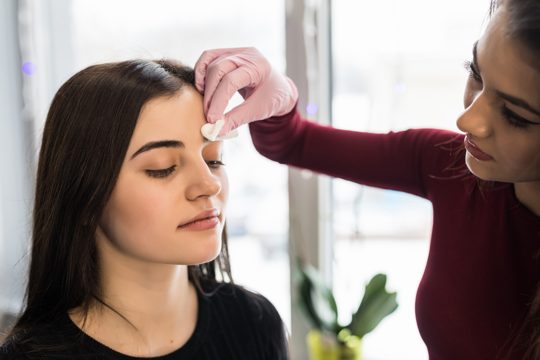
This is an ideal timeframe as it allows your skin ample time to heal, while also providing the pigment sufficient time to settle into the skin. This pause is also beneficial as it gives you the chance to live with your new brows, figure out any alterations you might want and then communicate these to your brow artist during the touch-up session.
In essence, the touch-up session is an integral part of the brow enhancement journey. It's not a step you'd want to skip, as it's your ticket to attaining the well-defined and stunning brows you've always desired. So you see, the touch-up session is not just necessary - it's pivotal for ensuring the best possible outcome.
Can I get my touch up session sooner than 4 weeks?
No, its not recommended to get the touch-up session sooner than 4 weeks as the skin needs sufficient time to fully heal. Indeed, it's crucial to understand that rushing into a touch-up session sooner than 4 weeks is not recommended.
Our skin is a remarkable organ, with an incredible ability to heal and rejuvenate itself. However, it needs adequate time to do so. During these four weeks, your skin goes through several stages of recovery, each one as important as the other in ensuring a healthy healing process. Just like any other procedure, the healing time is critical. In the initial days, the skin starts to recuperate from the immediate impact of the procedure. It then enters a phase where it begins to regenerate, rebuilding the protective layers that have been affected.
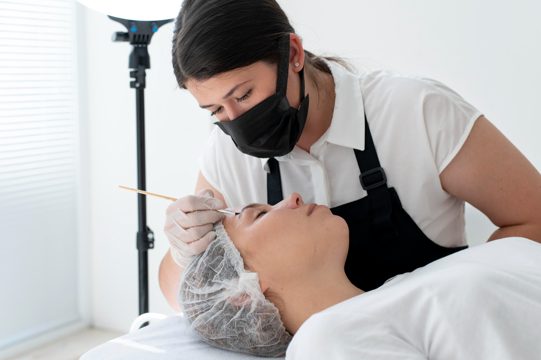
By the end of the 4 weeks, your skin would have fully healed, replenished, and ready for the next session. Therefore, it's crucial to give your skin this time to heal fully.
Not doing so can lead to complications like irritation, infection, or unsatisfactory results. Patience is key here. Remember, good things come to those who wait, and this is especially true when it comes to skincare procedures. So, let's respect our skin's natural healing process and give it the time it requires to fully recover.
Is it painful?
Some clients may feel a slight discomfort during the procedure, but its usually not considered painful. The sensation is often described as similar to a paper cut or a rough scratch.
While it's true that some clients may experience a slight discomfort during the procedure, rest assured that it is generally not viewed as a painful experience. The sensation, as some have described, is more akin to the minor sting of a paper cut or the transient irritation of a rough scratch, rather than any intense, unbearable pain. We understand that each individual's pain threshold varies, and so, the level of discomfort can differ from one person to another. However, it's important to remember that this is only a temporary sensation, which subsides quickly, leaving you with the beneficial results of the procedure. In addition to this, our professional team is always on hand to make the process as comfortable as possible for you.

We provide clear explanations about each step of the procedure, and we are always ready to address any concerns or questions you may have. We believe that understanding the process can significantly reduce any feelings of unease, allowing you to relax during the procedure.
Moreover, we take pride in our ability to provide a supportive and reassuring environment where clients can feel at ease. Our ultimate goal is to ensure that your experience with us is not only beneficial but also pleasant and stress-free. So, while there might be a slight discomfort, remember that the benefits you'll reap post-procedure will far outweigh this fleeting sensation.
How long does it last?
Microblading typically lasts 1-2 years, depending on skin type (normal, oily, dry), age (youthful/mature). Skincare routine will also affect the lasting effect of the pigment.
Each individuals color retention within the skin will vary. To maintain the brows looking fresh, a touch up is suggested every 12-18 months. Microblading, an innovative and popular method of eyebrow enhancement, tends to retain its stunning effects for a period of approximately one to two years. This, however, is not a hard and fast rule as it can significantly vary depending on several impactful factors. For instance, your skin type plays a crucial role in how long the procedure's results will last. Individuals with normal skin might experience different durations of effectiveness compared to those with oily or dry skin. Moreover, your age also influences the longevity of microblading.
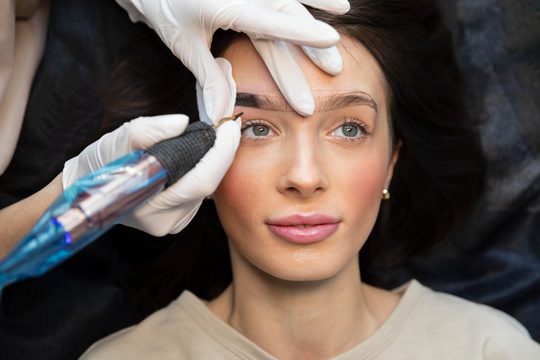
Whether you're in the prime of your youth or enjoying the wisdom of the mature years, your skin's ability to retain pigmentation will differ. This is due to the natural changes that occur in our skin as we age, affecting how long the microblading pigment can hold.
Your skincare routine is another variable that substantially impacts the lasting effect of the pigment. The products you use, and how often you exfoliate, can either extend or shorten the lifespan of your microblading treatment. It's important to note that everyone's skin is unique, and as such, the color retention within the skin will vary from person to person. To ensure that your eyebrows continue to look as fresh and beautifully-defined as possible, it's recommended to schedule a touch-up session every 12-18 months. This helps maintain the visual impact and quality of your microblading, keeping your brows in perfect shape. So, while microblading does offer a certain duration of effectiveness, it's upkeep also plays a pivotal role in how long you can enjoy those perfectly sculpted brows.
What are the pre and post care procedures?
Pre-care procedures involve avoiding alcohol, aspirin/ibuprofen, and any vitamins that may thin your blood for 72 hours. Clients are also advised to avoid tanning and face scrubs or chemical peels at least two weeks prior.
Post-care procedures involve cleaning the brows with a q-tip and lightly moistening with distilled or cooled downed boiling water within 2 hours after the procedure. Applying a light layer of healing balm morning and night to brows for at least 5-7 days is also recommended. Makeup should not be applied on the brow area for a minimum of 10 days. Embarking on your aesthetic journey, it's essential to understand that the pre-care procedures aren't just suggestions, but are critical steps to ensure optimal results. These include abstaining from alcohol, aspirin or ibuprofen, and any vitamins that may thin your blood for a full 72 hours before your appointment. This is a preventative measure designed to minimize any possible bleeding and bruising during the procedure. Moreover, clients are strongly advised to forego tanning, whether natural or artificial, and to halt the use of face scrubs or chemical peels at least two weeks prior to their appointment. This is done to ensure that your skin is in its most natural and healthy state, free from any inflammation or irritation that these activities may cause. This period allows your skin to heal and rejuvenate, becoming a perfect canvas for your upcoming procedure.
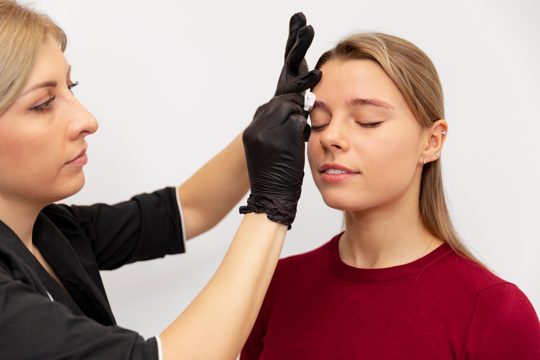
After the procedure, the post-care regimen is just as important to secure the longevity and effectiveness of your treatment. Within the first 2 hours post-procedure, it's recommended to gently clean your brows with a q-tip and lightly moisten them with either distilled or cooled-down boiling water.
This will help to cleanse the area, keeping it free from any potential irritants while promoting healing. In addition, applying a light layer of healing balm to your brows both in the morning and at night for at least 5-7 days is of utmost importance. This activity helps in nourishing the skin, aiding in the healing process and ensuring that your new brows maintain their fresh and vibrant look. Lastly, it is highly recommended to abstain from applying makeup on the brow area for a minimum of 10 days following your procedure. This step is crucial in preventing any potential infection or irritation that may occur due to the chemicals present in cosmetics. It also allows your brows to heal properly and retain their newly-acquired, stunning shape and color. By adhering to these pre and post-care guidelines, you're well on your way to achieving the most beautiful and long-lasting results.
Who is not suitable for the procedure?
Those with diabetes, serious diseases such as cancer, epilepsy, autoimmune disorders, or who have had any type of organ transplant are generally not suitable candidates for microblading. Additionally, those with skin conditions on or near the eyebrows area such as seborrheic dermatitis, rosacea, acne, and more may not be suitable for the procedure.
Microblading, despite its many aesthetic benefits, unfortunately, is not a one-size-fits-all procedure. Those who are living with diabetes or grappling with serious health conditions like cancer, epilepsy, or autoimmune disorders, are generally advised against this kind of semi-permanent makeup. This caution extends, too, to those who have undergone organ transplants, as the procedure may pose potential health risks for them. The body's immune system in such individuals may be compromised, making the healing process post-microblading more challenging. Moreover, skin health plays a pivotal role in determining the suitability of a candidate for microblading.
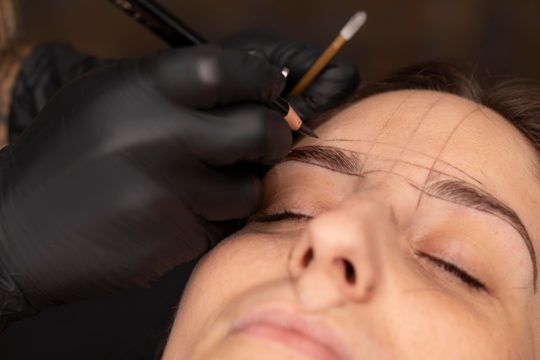
Conditions affecting the skin, specifically in the eyebrow area, can significantly impact the outcome of the procedure. These include but are not limited to, seborrheic dermatitis, rosacea, acne, and others.
Such conditions can affect the texture and health of the skin, influencing how well it retains pigment, and potentially leading to unsatisfactory results or even complications. Finally, it's not just about the immediate outcome of the procedure, but also the longevity of the results. Microblading, after all, is a semi-permanent procedure and having such skin conditions or health issues might affect the durability of the pigment, leading to more frequent touch-ups. Thus, it's crucial to consult with a professional who can assess your suitability for microblading and guide you towards the best decision for your individual circumstances.
Risks and complications?
As with any cosmetic procedure, there are risks and potential complications. These may include infection, allergic reaction, unsatisfactory results, and scarring.
It is important to choose a reputable and licensed professional to minimize these risks. Just like any cosmetic procedure that one might consider, there are a series of risks and potential complications that are inevitably associated with it. These complications can range from minor issues such as mild allergic reactions to more serious complications like infections. In some cases, the results of the procedure may not be up to the individual's satisfaction, leading to dissatisfaction and regret. Moreover, scarring, a common concern with invasive procedures, can occur, potentially causing psychological distress in addition to physical discomfort. Therefore, it is of utmost importance to make sure that the professional you choose to carry out the procedure is not only reputable but also duly licensed.
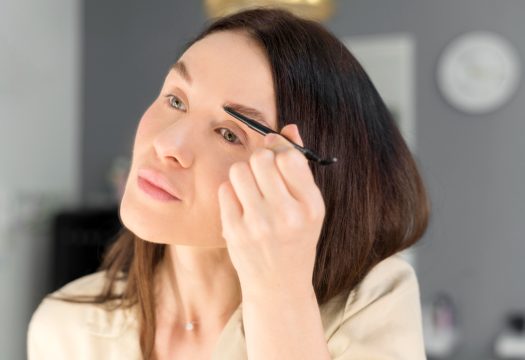
Opting for a professional with a proven track record of successful procedures can significantly minimize the risks involved. They would have the required expertise to handle any unexpected issues, ensuring your safety and satisfaction.
Moreover, a licensed professional is more likely to adhere to the stringent standards and regulations set by health authorities, further safeguarding your interests. In conclusion, while considering a cosmetic procedure, one should not overlook the potential risks and complications that could arise. It is crucial to do thorough research and choose a professional who is both reputable and licensed. This can go a long way in ensuring the procedure is performed safely, with a higher likelihood of achieving the desired results, and with the least possible risk of complications. Making an informed decision can help turn your cosmetic procedure into a positive, life-changing experience rather than a source of regret.
What if I do not like it?
If you are unhappy with the results, there are treatments available to help fade the pigment faster. However, the best prevention is to research thoroughly, choose a reputable technician, and follow all pre and post procedure instructions.
If you find yourself feeling dissatisfied with the outcomes, fret not, as there are a myriad of treatment options available to expedite the fading process of the pigment. You don't have to be stuck with a result that doesn't meet your expectations. With advancements in skincare technology, there are now innovative ways to help reduce the appearance of unwanted pigmentation more rapidly than ever before. These treatments are designed to work in harmony with your skin's natural processes, fostering a healthier complexion from the inside out. However, it's crucial to remember that the most effective strategy lies not just in treating, but in preventing. Arm yourself with knowledge through thorough research before you make any decisions. Dive into user reviews, read up on the latest techniques, and don't hesitate to ask questions. Knowledge is power, and it's your most formidable weapon against regrettable results.

Choosing your technician is a decision that should not be taken lightly. Look for a seasoned professional with a sterling reputation in the industry.
A reputable technician will not only have the skills and experience to carry out the procedure with meticulous precision but will also provide valuable advice tailored to your specific needs and skin type. Finally, it is of paramount importance to diligently follow all the instructions given before and after the procedure. These guidelines are designed to ensure optimal results and minimize any potential risks or complications. Compliance with these instructions is not merely a suggestion, but a necessity for your skin's health and the effectiveness of the procedure. In conclusion, while you have the reassurance of treatments available in case of dissatisfaction, the key to a successful outcome primarily lies in comprehensive research, selecting a proficient technician, and strict adherence to all pre and post-procedure instructions. This approach will not only lead to more satisfactory results but also contribute to the overall wellbeing of your skin.
What are your cancellation or missed appointment policies?
Cancellation and missed appointment policies vary by clinic. Its important to check with your specific provider for their policies.
Often, clinics require a 24-48 hour notice to cancel or reschedule to avoid a cancellation fee. It's worth noting that the protocols for cancellation and overlooked appointments fluctuate depending on the specific clinic you plan to visit. This is a critical factor that you should always remember to take into account. To gain a clear understanding, it is highly recommended that you contact your individual provider and thoroughly discuss their particular policies regarding appointments. This will ensure you are well informed and can avoid any potential misunderstandings. Frequently, medical facilities and clinics necessitate that patients provide a notice of 24 to 48 hours in advance should they need to cancel or reschedule their appointment.

This is a standard practice across many institutions to ensure that the clinic operates smoothly and efficiently, while also respecting the time of healthcare professionals. Ignoring this rule often results in a cancellation fee, a consequence that is better off avoided.
Remember, it's not just about keeping your own schedule organized, it's about respecting the clinic's time as well. Your adherence to these guidelines allows clinics to better serve you and other patients, as they can utilize cancelled slots for individuals who need urgent care. Therefore, always ensure to stay aware of the cancellation and missed appointment policies in your chosen healthcare facility and do your best to abide by them. This not only saves you from potential cancellation fees, but also contributes to the smoother functioning of the healthcare system.
About us
Welcome to SeniorCaresHub! Welcome to our comprehensive senior care destination! We pride ourselves on being a trusted resource for all things related to caring for aging loved ones. We understand the unique needs and challenges that come with senior care, and our mission is to provide you with the information, resources, and support you need to confidently navigate this journey and help you provide the best possible care for your aging loved one.

